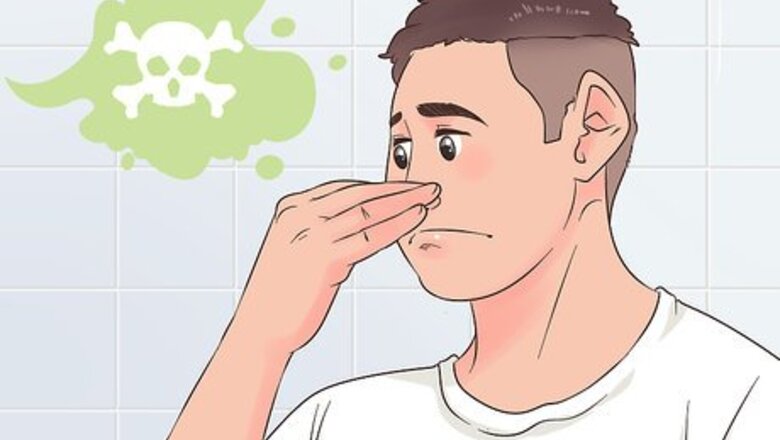
views
Responding Immediately
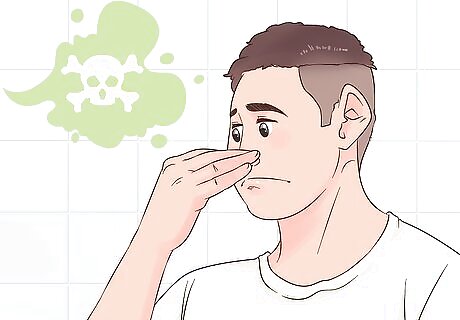
React right away if you smell or see toxic gases. An unusual smell may be one of the only warning signs that you are being exposed to a gas attack. Although not all toxic gases have a unique scent, many do. Look for a discolored cloud in the air. This cloud might dissipate quickly or appear to linger in the air. As soon as you’ve smelled the gas’ scent, it means that you’ve been exposed. You’ll need to take immediate action to limit or counter the effects of the gas. Sulfur mustard gas can be odorless or smell like mustard or onions. Chlorine gas often has a pineapple, pepper, or bleach scent. Sulfur mustard gas can appear brown or yellow in the air. However, it can also be clear and invisible to the naked eye, like sarin gas.

Exit the building if you detect gas inside. If you smell or see gas in the air, leave the building space as quickly as possible. Your goal should be to get to fresh air because staying inside will only expose you to a concentrated amount of the gas. If necessary, climb out of a nearby window and stay outside until help arrives. Take the path to exit the building that appears to dodge any clouds or concentrations of the gas, if visible.
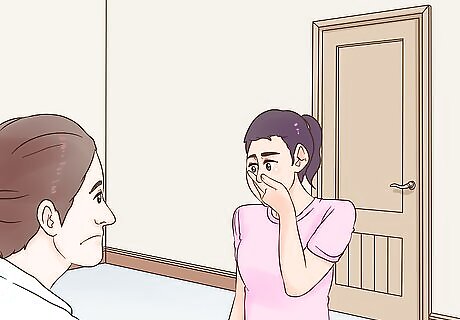
Seek shelter indoors if you see signs of gas outside. Bring any pets or family members inside as well. If you see neighbors or other people outside, yell for them to seek shelter immediately. Do not try to outrun a cloud of gas in your car or on foot, as you could get overtaken with no shelter options. Staying outdoors will expose you to a higher concentration of the gas. Moving indoors will not provide complete protection from the gas, but it will minimize your exposure until you can get help. If you are outdoors and indoor shelter isn’t available, try to get to higher ground. Most chemical gases will sink to the ground, so being higher up will lessen your exposure.
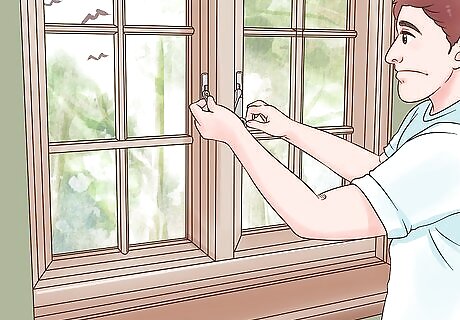
Cut your indoor space off from outside exposure. Close any doors or windows. Close all air vents and shut off your air conditioning or heating units. Shut any fireplace dampers or any other open spaces that lead to the outside. The goal here is to block off any and all openings that will allow the gas to move from outside to indoors. These actions will help to keep your indoor air as uncontaminated as possible.
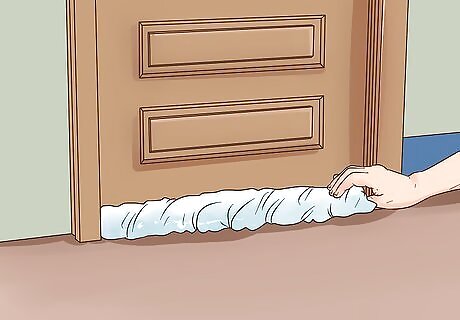
Go to the most isolated room indoors. Once you are inside, make your way to the smallest room with the fewest windows or least access outdoors. Use spare fabric, plastic, or any other available material to block off the edges of the doorframe, especially concentrating on the gap at the bottom. If you have duct tape, apply it to the edges of the door and any windows. Although it isn’t always 100% effective, moving to a small, isolated space can improve the quality of air that you’ll breathe during a gas attack.
Limiting Your Skin-Based Exposure
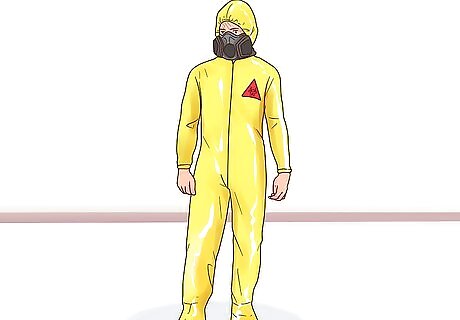
Put on any protective gear that you own. If you have a hazmat suit, get into it at the first threat of gas exposure. If you have a gas mask, put it on as well. A mask or suit may not prevent you from gas exposure, but it can decrease it until help arrives or the attack subsides. For example, nerve agents, such as VX, cause damage through skin contact, so only a full weapons-grade hazmat suit will protect you. Make sure that your suit or mask fits you securely. A mask or suit with gaps on the edges can easily let gas slip inside. Some suits or masks also require power sources, typically batteries, or air canisters. You should always store your protective gear with extras of these important components. If you are without a mask or suit, pull up your shirt so that the fabric covers your mouth and nose. The fabric will act as a temporary, makeshift air filter.
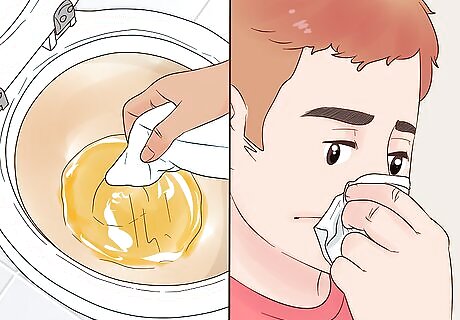
Hold a urine-soaked cotton cloth on your face in the event of a chlorine attack. A government-grade gas mask is an even better option, but in an emergency, this will create a temporary, usable mask. The urine will absorb into the cotton/fabric and crystalize the chlorine gas. This type of mask also only lasts until the urine dries out. A handkerchief or any other fabric can also be used as the base of the mask. Watch out for the tell-tale scent of bleach that often indicates a chlorine attack. This type of mask was used by soldiers in WWI to survive chlorine gas attacks.

Remove and dispose of your clothing if you’ve been exposed to gas. As soon as you are in a safe place, take off the clothing that you were wearing during the attack. Take care to touch it as little as possible to avoid spreading the gas remnants to your hands. Then, seal the clothing twice over in a plastic bag or bin. If possible, cut your clothes off instead of pulling them up over your head, which can help limit your exposure to the gas.

Rinse your body off with clean water. Take a hot shower for at least 10 minutes to help cleanse your skin of the gas. Scrub your whole body with soap, if available. Rinsing your eyes out with clean water or saline for 5-10 minutes can also help to minimize the possibility of eye damage.
Receiving Professional Assistance
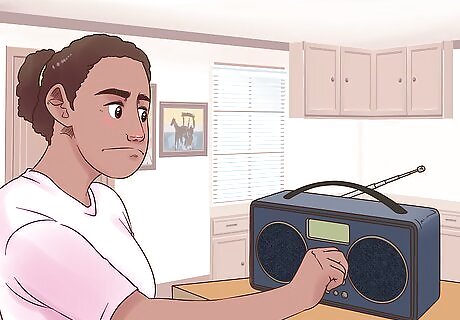
Use your emergency radio to keep track of official safety reports. If you have an emergency radio, bring it into the room with you and turn it to an available frequency. Monitor any reports that you hear regarding the progress and effects of the gas attack. If your cell phone is available and working, reach out to emergency professionals, inform them of your location, and request assistance. Realistically, in the event of a gas attack, you can expect to wait some time before receiving any emergency assistance or perhaps even updates. Try to stay in contact with the outside world the best that you can. To avoid running down your radio or phone batteries, check for news at particular intervals, such as every 30 minutes.
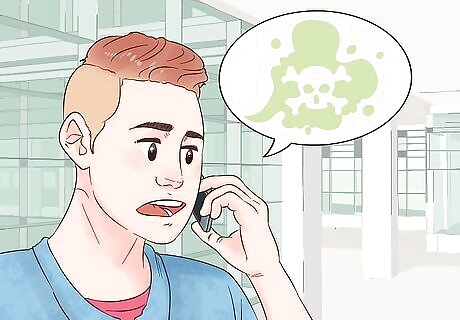
Seek out supportive medical care. Use your cell phone to call or text for emergency services. In the event of a large-scale gas attack, you’ll likely have to call many times and may have to wait a long period before getting help. When you do see a medical professional, they will assess your injuries and develop a treatment plan that fits your condition and the overall situation. Toxic gas exposure often requires continuous monitoring because your symptoms do not always develop rapidly. With chlorine exposure, pulmonary edemas can develop up to a day after initial exposure. Not all gas exposures can be treated the same. Chlorine gas exposure, for example, requires close monitoring of the pulmonary system, including oxygen treatments. It’s advisable to stay indoors for as long as you can post-attack, as it takes some gases days to dissipate. Unless you are critically injured, the best plan initially is to shelter in place and wait for medical help to come to you.
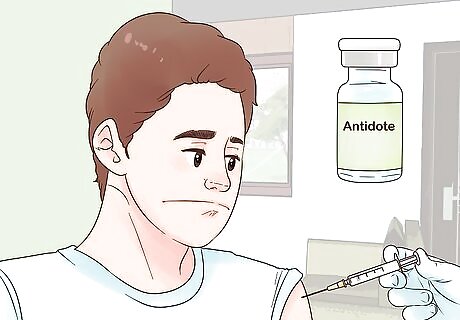
Take an antidote, if available, as soon as possible. Not all chemical gases have antidotes, but some do. If you are exposed to an agent, seek out a medical professional. They will then determine if an antidote exists and is available for use. Sarin gas, for example, is treatable with an antidote. However, it must be used within hours of exposure.















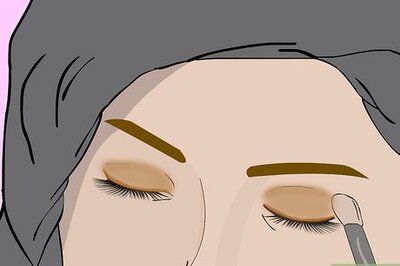

Comments
0 comment